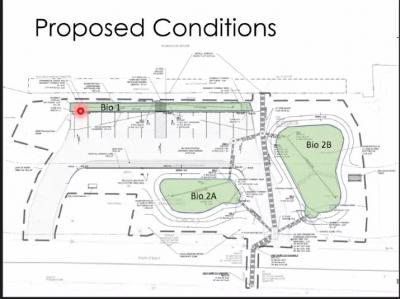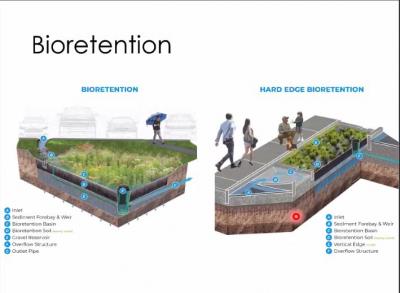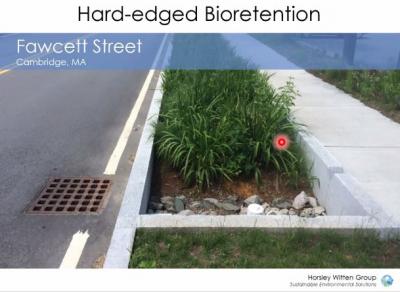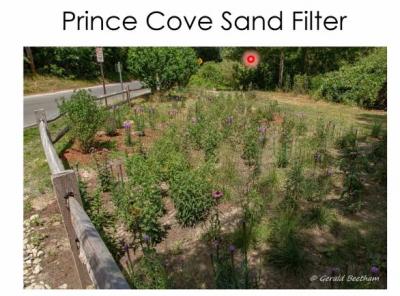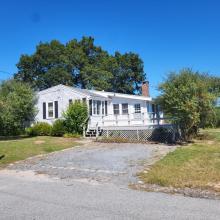Bioretention beds proposed for stormwater treatment at Besse Park
Besse Park could get a facelift through new stormwater retention and treatment beds filled with native grasses, wildflowers, and shrubs.
The park was identified by the Buzzards Bay National Estuary Program as an area that could benefit from better stormwater management.
The plan was presented at the Feb. 3 Conservation Commission meeting.
The park has two storm drains: one collecting water from the park and parking lot and one collecting water from a wider section of Main Street. Both discharge directly into the Agawam River, which is polluted and sensitive to additional pollutants.
Currently, although there is a catch basin that allows some nutrients to settle down from run-off, but much of the polluted water is discharged without any treatment.
Michelle West of the Horsley Witten Group said that ideally, the first inch of any run-off would be treated, as that first inch washes most of the dirt and oils off the ground.
The proposed bioretention areas would get to about 85 percent of that goal.
The coalition is proposing three bioretention areas that would use specific soils and natural plants to slow the flow of runoff and remove pollution.
One would be a hard-edged bed in front of the parking lot, which would necessitate moving the parking lot back slightly.
The other two proposed bioretention areas are in the park itself, one between the parking lot and the street and one to the right of the parking lot when facing the water.
The bioretention areas are designed to prevent pooling, with a maximum of 6 inches of ponding that would disperse fairly quickly after a storm.
West pointed out that as is, the parking lot quickly ponds after even fairly minor rains.
The beds would not have any abrupt drop-offs, and the largest bioretention area would have stepping stones so people could walk through it. The beds would be planted with native plants including wildflowers, grasses, and shrubs.
Commission member Elissa Heard expressed some concerns that the beds would reduce the space for park-goers to use to picnic or fly kites. West said that while underground structures were considered, those would not work to sufficiently remove nitrogen from runoff at the site.
The project will be brought to the Historic District Commission, which has jurisdiction over the Main Street area, for consideration. The hearing was continued to Feb. 17.



